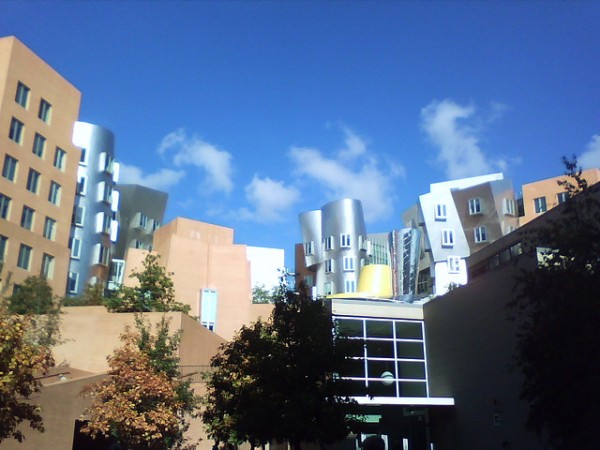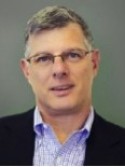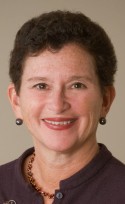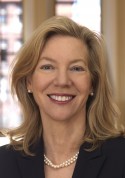
Universities often set up shop in cities, and cities often set up shop around universities. But the relationship between the two communities–town and gown–can be quite distant, even hostile. What responsibility does a university have to its local urban community? In advance of “Can Universities Save Cities?,” a Zócalo event, several university scholars and presidents offer some answers.
They should avoid being monastic
Can the ivory tower save a city? Not if it remains an ivory tower. Critical to the enterprise is the extent to which the university is not just “in” a city but also “of” it. This is as much a problem of architecture and urban design as of planning and policy.
 The idea that a city would want to attract an institution of higher education in order to foster its own development is not new. As early as the beginning of the 18th century, the town of New Haven competed to bring what later became Yale University to the area and even constructed a building to push its cause. This building faced the New Haven Green. It wasn’t until the middle of the 19th century–when town-gown relations soured–that the university began to embrace the neo-gothic, monastic form for which it is now known.
The idea that a city would want to attract an institution of higher education in order to foster its own development is not new. As early as the beginning of the 18th century, the town of New Haven competed to bring what later became Yale University to the area and even constructed a building to push its cause. This building faced the New Haven Green. It wasn’t until the middle of the 19th century–when town-gown relations soured–that the university began to embrace the neo-gothic, monastic form for which it is now known.
Despite clear historical evidence to the contrary, in the U.S., “campus” suggests a space set apart. In order for universities to participate in the revitalization of American cities, this architectural and intellectual form must be turned inside out. Ithaca may not be on track to become the next Manhattan, but clearly Cornell sees the virtue of Manhattan (or its proximate Island of Roosevelt) as important to its own growth as a global research engine. The location of its new campus on an island threatens to replace inward-facing walls with water-based moats. New York City planners should ensure that greatly expanded infrastructure; accessible open space; and programs, incubators, and educational opportunities reaching out into the community are part of the ultimate design.
The Dean of the School of Architecture at Syracuse University, Mark Robbins, refers to his university’s efforts as “textbook reweaving.” His school has been directly involved in numerous community-based initiatives around the building of sustainable and affordable housing; open space and new infrastructure; and the renovation of industrial buildings to attract new businesses, artists, and creative professionals. The Detroit Collaborative Design Center at the University of Detroit Mercy uses community-based participatory design exercises to help its city’s beleaguered citizens reshape their future. While these interventions may not “save” their cities, they draw on the university’s greatest strengths–the production of new knowledge and new graduates–to advance urban revitalization.
Sharon Haar is an architect and associate professor of architecture at the University of Illinois at Chicago. She is the author of The City as Campus: Urbanism and Higher Education in Chicago (Minnesota).
————————————-
They should do everything they can to fix urban America

Almost since the founding of the nation, universities in the United States eschewed European ideas of an academe apart from the broader community and higher education for its own sake. Colleges and universities were to be servant-leader institutions, closely engaged in solving the problems in a fast-growing, democratic, capitalistic society.
Within this tradition, universities and their cities have been inextricably tied, spiritually, economically, emotionally, as well as physically. With urban America facing increasingly great challenges, universities, through their work in scholarship and research, can help create a better-prepared workforce, increase employment, stimulate local redevelopment, draw investments and new businesses to their neighborhoods, and raise academic performance in the population at large. Universities must take advantage of these opportunities, for reasons of self-interest, fulfillment of mission, and for the greater good.
David Wilson is president at Morgan State University.
————————————-
They should improve the quality of life in their communities
 Although an explicit urban-serving mission for higher education dates from the founding of Johns Hopkins University, America’s first modern research university, in 1876, universities are now essential partners in the revitalization of America’s communities, cities, and metropolitan areas. Deindustrialization and globalization have undermined the traditional manufacturing-based economies, leaving unemployment, poor schooling, and generational poverty in their place. A knowledge-based economy has become dominant. Universities are place-based institutions deeply affected by their local environment and surroundings. The futures of universities and their cities have become intertwined.
Although an explicit urban-serving mission for higher education dates from the founding of Johns Hopkins University, America’s first modern research university, in 1876, universities are now essential partners in the revitalization of America’s communities, cities, and metropolitan areas. Deindustrialization and globalization have undermined the traditional manufacturing-based economies, leaving unemployment, poor schooling, and generational poverty in their place. A knowledge-based economy has become dominant. Universities are place-based institutions deeply affected by their local environment and surroundings. The futures of universities and their cities have become intertwined.
Because they can make a difference in the lives of their neighbors, universities have a moral and ethical responsibility to contribute to the quality of life in their communities. They are often the largest employers in their cities. They attract businesses and highly skilled individuals. They possess enormous resources (most significantly human resources) and play a leading role in developing and transmitting new discoveries and educating societal leaders. Simply stated, what universities do (or fail to do) has enormous impact on cities.
Universities must foster collaboration among different schools and disciplines to help solve universal problems such as poverty, inadequate schools, and poor healthcare, especially when these problems are manifested locally. This will allow universities to fulfill their core missions of advancing knowledge and educating caring, engaged citizens with what Benjamin Franklin termed “an inclination joined with an ability to serve.”
Ira Harkavy is director of the Barbara and Edward Netter Center for Community Partnerships, University of Pennsylvania, and chair of the Anchor Institutions Task Force.
————————————-
They should apply their resources toward real community engagement

In my view, a university’s primary responsibility to its city is to be an engaged institution. Although most universities are engaged in the pursuit of knowledge, they’re often disconnected from local communities, and this causes them to be dismissed as ivory towers.
In response to this, three university presidents–those of Brown, Georgetown, and Stanford–along with the president of the Education Commission of the States came together in 1985 to found Campus Compact. The idea was to “challenge higher education to re-examine its public purposes and its commitments to the democratic ideal.” The presidents wrote that they would “challenge higher education to become engaged, through actions and teaching, with its communities.”
Membership in Campus Compact has grown from a handful of colleges and universities in 1985 to over 1,100 institutions of higher education today. In 2006, the Carnegie Foundation for the Advancement of Teaching began an elective classification for Community Engagement to recognize “the collaboration between institutions of higher education and their larger communities (local, regional/state, national, global) for the mutually beneficial exchange of knowledge and resources in a context of partnership and reciprocity.” To date, nearly 300 colleges and universities have received this classification, signifying a broader and deeper engagement with their communities.
Although the nature of this “engagement work” varies widely, an increasing number of higher education institutions are moving beyond student volunteerism and service-learning to become meaningful partners in mobilizing the university’s resources–financial, intellectual, faculty, students, and staff–to address a wide range of important public issues in their communities.
Community engagement benefits both cities and institutions of higher education. For major research universities, community engagement can become a strategy for fostering stronger pathways among the various silos (schools, departments, research centers) that characterize the hyper-specialization of the modern research university. This is good for the community, as it brings a broad cross-section of knowledge to bear on pressing problems. It is good for the university, as it exposes students (and faculty!) to a wider range of theories and perspectives and tests those theories in the real world.
Michael J. Rich is associate professor of political science and environmental studies and director of the Office of University-Community Partnerships at Emory University.
————————————-
They should help prepare our cities for the future
 Cities are faced with growing challenges and shrinking budgets, and universities are in a position to help–right now. City staff need ideas on how to retrofit cities for more sustainability but often lack the time, personnel, or resources to access the latest knowledge and thinking. At the same time, students and faculty at universities across the country are studying and creating valuable new ideas every day. All we need to do is connect the two.
Cities are faced with growing challenges and shrinking budgets, and universities are in a position to help–right now. City staff need ideas on how to retrofit cities for more sustainability but often lack the time, personnel, or resources to access the latest knowledge and thinking. At the same time, students and faculty at universities across the country are studying and creating valuable new ideas every day. All we need to do is connect the two.
This is exactly the experiment that is in its third year at the University of Oregon. The Sustainable City Year Program (SCYP) simply asks existing professors of city planning, public policy, architecture, law, product design, economics, landscape architecture, journalism, arts administration, and others, to teach their existing courses, from studios to data analysis to lecture courses, in their existing ways, but focus them on issues of interest and need identified by a single city over an academic year. Instead of students working in a vacuum and turning in term papers to the professor, these students work with city staff and community members to put their energy and ideas to work in the real world.
Last year, the program included 25 faculty from 10 different disciplines who volunteered to focus 28 different courses, over 500 students, and 80,000 hours of effort to help a single city (Salem, Oregon) pivot toward a sustainable future. Each course worked with a different contact person within the city, relevant private and nonprofit organizations, and community members. Projects ranged in type and scale–from green building and industrial ecology to sustainable transportation and community engagement.
The results have been transformative for city staff, for students, and for faculty. They point to a new role for higher education to in preparing our cities for the future.
Marc Schlossberg is co-founder and associate director of the Sustainable Cities Initiative (SCI) and associate professor of Planning, Public Policy and Management (PPPM) at the University of Oregon.
————————————-
They should help build civic infrastructure
 All institutions of higher education–public or private–share a public mission to spur innovation and create opportunity. In cities and towns, this responsibility is especially acute.
All institutions of higher education–public or private–share a public mission to spur innovation and create opportunity. In cities and towns, this responsibility is especially acute.
In today’s wired world, thousands are not connected at all, barely hanging on, falling farther and farther behind in education, income, health, nutrition, and employment. This is a grievous, shameful waste. To achieve our potential as anchors of our communities, universities must get to work on place-based strategies engaging many disciplines and many diverse partners.
In Syracuse, a post-industrial Rust Belt city, faculty and students of Syracuse University are joining with neighborhood groups, the school district, government, industry, and nonprofits to build civil and social infrastructure that is changing the face of our city and the faces of those who participate in charting the future. These efforts span areas such as inclusive urban education; environmental sustainability; art, technology, and design; and neighborhood entrepreneurship.
We believe that our anchor institution strategy, which we call Scholarship in Action, is helping to transform our city. In the process, we, too, are being transformed, both in the composition of our academic community and in how we do our work.
Nancy Cantor is chancellor at Syracuse University.
————————————-
They Should Make Local Engagement a Strategic Priority
 Universities have a special obligation to invest intellectual, financial, and social capital in our city neighborhoods, working with local governments and other organizations as active partners in this mutually beneficial endeavor.
Universities have a special obligation to invest intellectual, financial, and social capital in our city neighborhoods, working with local governments and other organizations as active partners in this mutually beneficial endeavor.
I therefore made local engagement one of the key strategic priorities of our Penn Compact, and the Penn team has worked productively in partnership with our neighbors to strengthen the educational, cultural, and economic fabric of West Philadelphia and the greater Philadelphia region.
Just this past September, we opened Penn Park, which has transformed one of the ugliest parking lots on the East Coast into a beautiful, sustainable, 24-acre urban oasis. Penn Park not only adds essential recreational space to our campus community; it also connects West Philadelphia with the city’s central business and residential district, and is open to everyone to enjoy.
Many large urban universities, like Penn, are both “eds” and “meds”–education and medical enterprises–and these were among the only sectors of the economy to add jobs during the Great Recession. In Philadelphia, “eds and meds” represent 30 percent of the region’s jobs. Penn–the largest private employer in the city and the second largest in the state–contributes $26 million per day to Philadelphia, which totals $9.5 billion per year.
But a university’s impact–and responsibility to its city–extends far beyond the economy. Its educational and cultural contributions transform people’s lives, both individually and collectively. Thousands of lectures, museum exhibits, and performing arts events contribute to the cultural vibrancy of American cities.
Volunteer and pro bono activities by faculty, students and staff also are part of a university’s special obligation and contribution to its city. Student engagement is led by programs in Penn’s Civic House, Fox Leadership Program, and Netter Center for Community Partnerships. Students and faculty provide health care and assistance through our LIFE (Living Independently For Elders) program, and the Penn Alexander School, created in 2001 through a unique partnership between Penn, the School District of Philadelphia, and the Philadelphia Federation of Teachers.
When universities are maximally successful, our impact continues after graduation: we educate students to apply what they’ve learned to continually improve the world.
Dr. Amy Gutmann is the eighth president of the University of Pennsylvania. In 2009, Penn was named a number-one “good neighbor” by the Survey of Best College and University Civic Partnerships.
*Photo courtesy of jak119. Photo of Sharon Haar by Roberta Dupuis-Devlin, UIC Photo Services.



